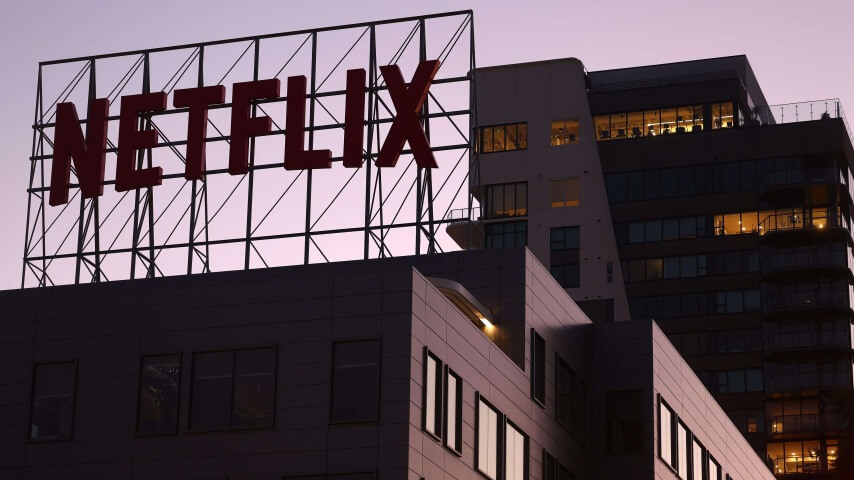It may not feel like it, but there are fewer shows now
New reports are heralding the end of "Peak TV" after a year with significantly fewer television programs

John Landgraf, president of FX and keen observer of the television landscape, predicted “that 2022 will be the high watermark” for scripted TV at that summer’s TCAs: “In other words, that it will mark the peak of the peak TV era.” As the person who coined the phrase “Peak TV,” he’d be the leading authority on the subject—and it seems his prediction has borne fruit, as reports from Ampere Analysis and Luminate released this week reveal scripted programming dropped 24% in 2023 (per Variety and The Hollywood Reporter). While it still tends to feel that there are an overwhelming amount of options for TV viewing, only 481 series were released last year, compared to 633 series each in the two years previous.
Hollywood’s dual writers and actors strikes had an undeniable impact on these numbers, as Ampere notes, but the report also cites “a downturn in the original content boom” and an “even more precipitous decline” in series orders. Per Variety, streaming services are at the forefront of this phenomenon, having released 77 fewer seasons than the prior year (broadcast TV networks released 55 fewer seasons, a number that is heavily influenced by the strikes). Luminate’s report tallied 1,784 TV programs across all genres and platforms in the U.S., “a 21 percent drop on 2022 or nearly 500 fewer shows aired,” per THR.
A year ago, FX’s Landgraf accurately predicted to IndieWire that the scripted series boom could soon reverse “like 20-30 percent.” Landgraf’s predictions aren’t infallible; in fact, when he originally coined “peak TV” in 2015, he expected to see a “decline coming the year after [2016] and beyond,” which obviously didn’t come to pass. It should also be noted that his observation on “peak TV” was specifically about the quantity, not the quality of television, as it’s occasionally been conflated. And even then—coming off a year with just 370 scripted programs—peak TV presented a looming problem, a kind of gold rush that would eventually and inevitably dry up. At that time, the peak TV era had “created a huge challenge in finding compelling original stories and the level of talent needed to sustain those stories,” as Landgraf put it at the summer 2015 TCAs, adding that there had been “an enormous impact on everyone’s ability to cut through the clutter and create real buzz.”
In 2015 there was already “arguably too much television,” he told Vox, creating “a whole different set of nontrivial emotional problems. When people are forced to make choices between too many options, they become confused. It’s difficult for them to parse those options and find the best choice, and any time they make a choice, they have a sense of giving something perhaps equally valuable or more valuable up.”
There are still significantly more options available for your viewing pleasure than there were 10 years ago, despite a steep decline in shows in 2023. But the paradox of choice today lies more so with the sheer volume of platforms on which to watch television, rather than the shows themselves. When Landgraf was first formulating his theory of peak TV, Netflix had only been in the original programming game for two years, and the streaming wars hadn’t even begun. Now there’s a streaming service for every studio, and the promise of cutting the cord has dissolved: most of these streamers have introduced ad-tier basic plans and are starting to introduce bundle packages that are essentially indistinguishable from cable.
The end of peak TV
In the 2020s, consumers appear to be becoming more disillusioned with the streaming situation, particularly when the programming they invest in seems to be quickly canceled or even disappeared altogether. Netflix, for example, has gained a reputation for axing series after two seasons. While the company previously pushed back on this notoriety, citing statistics that its rate of cancellation is within industry standards (via Deadline), the Ampere study showed Netflix released just 68 shows in 2023, down from 107 the year before (via Variety). Peacock, Hulu, Max, and Paramount+ all saw a reduction in series released, in various amounts, and of all the streamers only Amazon Prime Video maintained the same amount of new series ordered, meaning there will be fewer new shows premiering in 2024 across the board. “While 2024 will see some level of a bounce-back in the content being ordered, many of these titles will be released in 2025, meaning any recovery is likely to be slow going,” said Fred Black, principal analyst at Ampere Analysis.
The question remains how robust that recovery is going to be—and it almost certainly won’t recover to peak TV levels. The reduction in streamers’ releases began before the strikes; in fact, in January of last year FX president of original programming Nick Grad told IndieWire that agents have been “seeing more passes and a lack of orders,” and noted that “The cadence is just way off right now.” This is all another indicator that the business itself is changing. How it will evolve next remains to be seen.